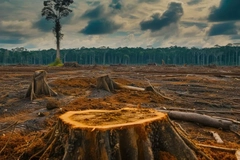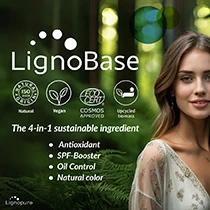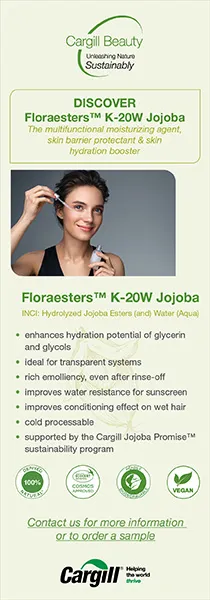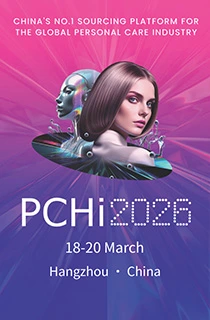Beauty’s ugly side II: Cosmetic associations and nonprofits react to report on child labor

01 Sep 2023 --- In this follow-up building on World Vision’s report exposing the prevalence of child labor in cosmetic raw material supply chains, Personal Care Insights speaks to several organizations on the accuracy of the report and recommendations for ensuring personal care products are sustainably child-labor-free.
Part one revealed a dark side of how children from low-income countries are involved in unsafe mines and farms for palm oil, cocoa, vanilla, shea, mica and copper, used in cosmetics. The report is titled “The High Price of Beauty: Child Labor in Global Cosmetics.”
Potential oversight
On the accuracy of World Vision’s report from an industry perspective, the Cosmetic, Toiletry and Perfumery Association’s (CTPA) Sustainability Team firstly clarifies that it cannot comment on how the global industry is handling the issue of child labor overall.
“It is difficult for CTPA to comment on the report as while it uses the lack of public disclosure as evidence that the seven companies investigated used sources of ingredients linked with child labor and poor working practices, no evidence is presented that the companies have used ingredient sources linked to these issues.”
Additionally, the Sustainability Team flags that the report does not refer to certification schemes for sustainably sourced ingredients.
“Companies take great care to ensure that they have visibility of their supply chains and that child labor is not involved. As we all work toward a more sustainable industry, companies are working on new methods and supporting certification schemes that enhance sustainable practices to keep improving supply chain transparency.” .jpg) Palm tree plantation (Image Credit: RSPO).
Palm tree plantation (Image Credit: RSPO).
Spotlight on certification schemes
Meanwhile, the multi-stakeholder nonprofit Responsible Mica Initiative (RMI), which brings together private companies, NGOs/CSOs and governments, takes a firm stance.
“The situation described in the World Vision report is accurate on the mica topic. I can only support their recommendation of not disengaging from the sourcing countries and continuing to buy natural mica, the only source of revenue for a large part of the communities, and, of course, to actively work toward responsible practices upstream of the supply chains,” a spokesperson tells us.
“An important point that needs to be added in the report regards the existing initiatives undertaken to solve the problems described, as the ones from the RMI, or Terre des Hommes,” says an RMI spokesperson.
According to the report, mica adds shimmer to cosmetics found in blush, eye shadows, bronzers, foundations, lipstick and mascara. It is sourced from Brazil, Canada, China, Madagascar, Pakistan, Sri Lanka and the US, but 25% of global mica comes from Jharkhand and Bihar, India.
Moreover, the Roundtable on Sustainable Palm Oil (RSPO) adds that a lack of access to schooling, crèches and after-school care systems described in World Vision’s report is accurate.
“Child labor is a troubling and often hidden issue that sadly persists in low-income agricultural settings, including in the palm oil sector. This is why independently audited certification schemes such as the RSPO are vital in these settings,” Leena Ghosh, head of human rights and social standards, tells Personal Care Insights.
The nonprofit has 5,500 members, of whom 97 are certified growers.
“While we cannot comment on the actions and progress of the wider palm oil industry in addressing child labor, we can share how the RSPO Standards address this issue,” she adds.
Increasing sustainable supply chains in the EU
Cosmetics Europe spotlights the RSI, RSPO and Global Shea Alliance as organizations that actively work to ensure fair, responsible and quality practices for specific ingredients. “It is highly important that our industry stays alert to the potential of this unacceptable practice [child labor] in the supply chain,” the organization tells us. World Vision’s report does not refer to certification schemes for sustainable sourcing.
World Vision’s report does not refer to certification schemes for sustainable sourcing.
“From our members’ perspective, transparency throughout the supply chain is of ever-increasing importance, not only because consumers are asking questions, but also, more and more companies are requiring relevant information from their suppliers, and in turn being asked to provide their information,” says CTPA’s Sustainability Team.
“This is creating a network of evidence flowing throughout the supply chain and highlighting those that cannot supply it. Some companies are also not just asking for the legal minimums, but working with suppliers that uphold the same values as them.”
Moreover, the team shares that CTPA has public information on certified sustainability-sourced ingredients, including palm, cocoa butter, mica and more on ethical principles for workers and anti-slavery, available in its Sustainability Hub.
“The European cosmetics and personal care industry has zero tolerance for any type of practice contrary to EU legislative labor rights frameworks and international standards,” adds the Sustainability Team.
Multi-stakeholder approach to uproot child labor
The RMI spokesperson says: “To address child labor in mica supply chains, members have adopted a multi-stakeholder holistic and impact-oriented approach. We are convinced that NGOs, civil society organizations, businesses and governments have a role to play and must work together to implement sustainable solutions to child labor situations.”
“Eradicating child labor situations requires working around all root causes for child labor, which include poverty, lack of education, poor access to health and nutrition, and informality of the sector.”
This is why RMI has developed and implemented three integrated program pillars that establish responsible workplace standards, empower local communities and create a legal framework for the mica sector, the spokesperson elaborates.
“RMI and members are also convinced that they have some transformative responsibilities and decided to work directly on the ground in India and Madagascar for the direct benefit of local mica communities and the entire mica ecosystem. For example, RMI has worked in 180 mica-dependent villages in India, reaching more than 90,000 beneficiaries.”
 The lack of access to schooling and care systems is accurately described by World Vision, says RSPO.Requirements, guidance and collaboration
The lack of access to schooling and care systems is accurately described by World Vision, says RSPO.Requirements, guidance and collaboration
Ghosh notes that the RSPO requires members to have a “formal policy on the protection of children, a documented process requiring strict evidence of age screening, and training for company staff on child protection in both plantations and smallholder plots.”
Additionally, the organization requires members to emphasize a no-child labor policy and its adverse effects on contractors and communities where the workers live.
Alongside requirements, the RSPO has published guidance documents for different stakeholder groups, such as Child Rights for Palm Oil Producers, Smallholders and Group Managers and Downstream Supply Chain Actors, shares Ghosh.
“Members must assess other elements that may impact both the child and parent(s) to ensure that children are not put in a position where they are forced to be at work, which includes providing adequate education facilities for workers’ children,” she states.
“Child labor in the palm oil industry is not something the RSPO can tackle alone. The role of governments and the enforcement of rules and regulations in producer nations continue to play a critical role alongside voluntary certification in solving this complex challenge.”
In related news, under the Global Development Alliance, the United States Agency for International Development invested over US$8.5 million as part of a US$25 million Sustainable Shea Initiative to support the competitive industry in seven West African countries, including Côte d’Ivoire.
By Venya Patel












